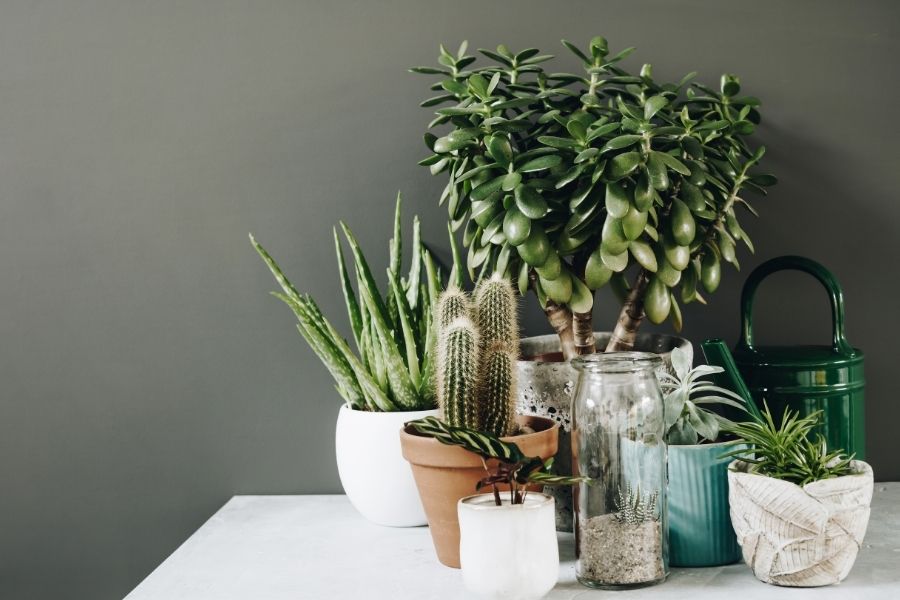
Do you happen to live in a place blessed with plenty of sunlight? If that’s the case and you also tend to surround yourself with greenery at home, don’t just assume that because most of your indoor plants originate from the tropics, they all positively love basking in the sun all day long. Bear in mind that in the jungle, the canopy of trees filters the sunlight and softens the blow for the plants underneath, meaning that not all tropical plants are actually accustomed to unlimited, unfiltered sunshine.
Which plants are, then? What are some of the best house plants that like direct sunlight? These ten indoor plants need generous quantities of sunlight to thrive, so just put them somewhere sunny in your house or apartment and they will soak up the heat like a lizard on a stone.
1. Jade Plant
A succulent plant native to South Africa, the jade plant is also known as “the lucky plant” because it’s supposed to bring you good fortune when you own it as a houseplant. While we can’t really guarantee as much, we’re pretty sure it will add plenty of charm to any household with its eye-catching, fleshy leaves and sturdy stems, as well as the occasional bloom.
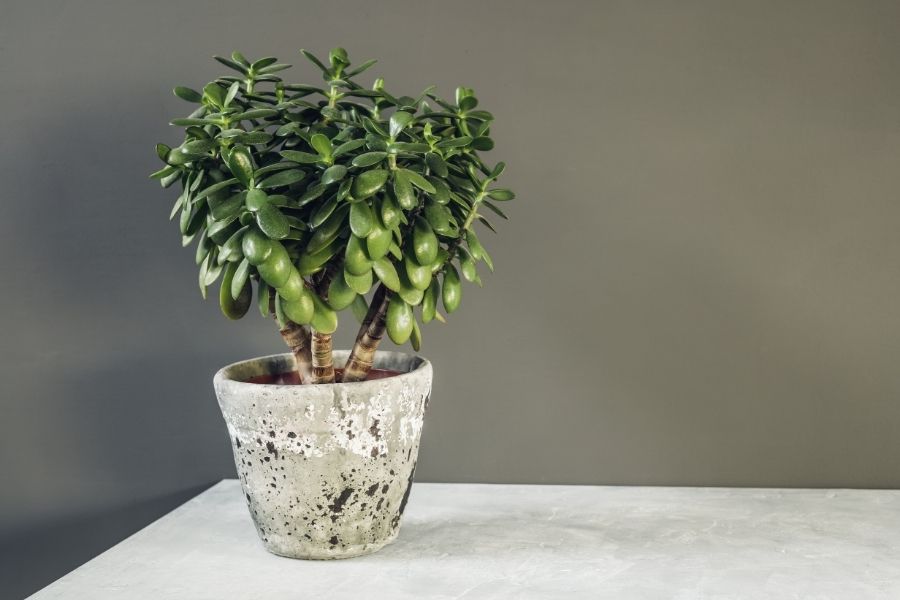
Provide your jade plant with at least four hours of sunlight every day by placing it next to a window pointing south, and water it regularly every two weeks or so when the top two inches of the soil dry out. Expect your indoor jade plant to keep you company for many years and grow to about 2-3 feet tall, especially if you plant it in a heavy pot with good drainage to start with.
2. Snake Plant
Touted as an unkillable houseplant that does great in low light, the snake plant will also thrive in full sun – especially if you can acclimate it by gradually increasing its exposure to direct sunlight, for instance in the winter when the sun is less intense (this is also generally true of many other plants in this list, by the way).
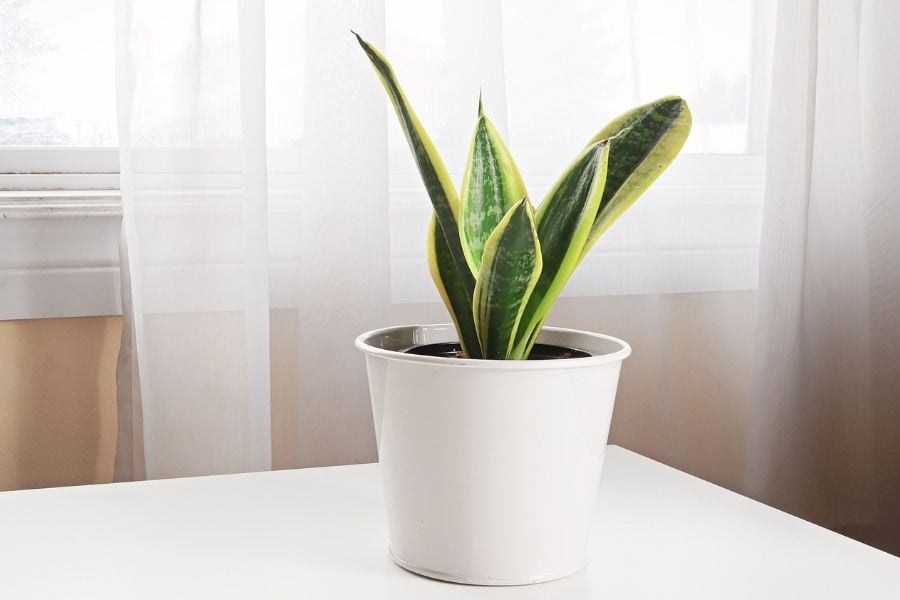
The snake plant is also known as “mother-in-law’s tongue”, but don’t be misled by the plant’s harsh-sounding names! It comes with pretty, snakeskin-like leaves as well as a seasonal blossom of fragrant flowers, and is a great choice for busy plant owners as it only requires to be watered once or twice a month.
3. Aloe Vera
A hardy little plant with plump, spiky leaves, the aloe vera will do best if you can give it six to eight hours of sunlight every day. Put it somewhere close to a south- or west-facing window and try to keep the soil evenly moist by watering it every two or three weeks, especially during the hotter seasons. Don’t oversoak your aloe vera – it’s more tolerant of droughts than of being waterlogged, so make sure the container has good drainage.
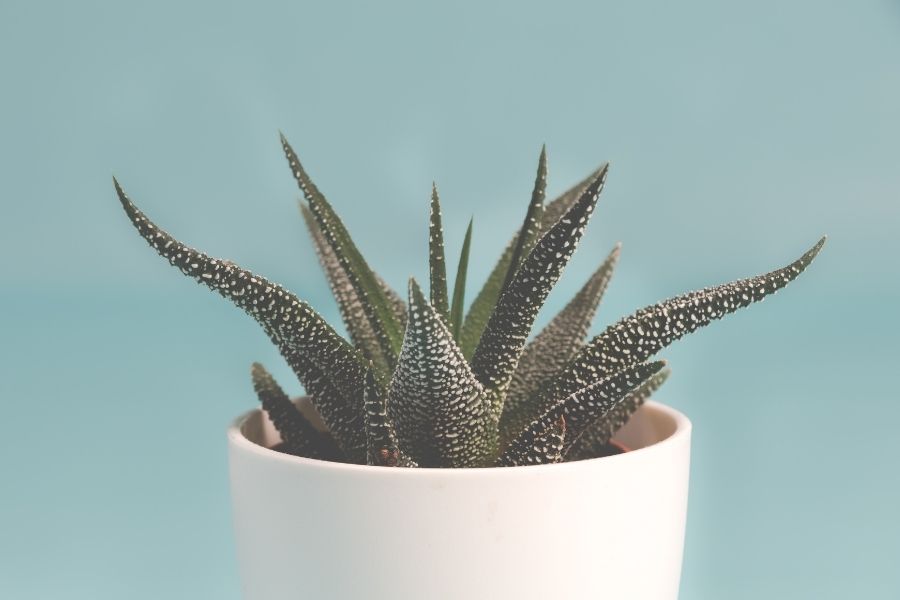
It’s a low-maintenance plant as well as a healer – the sap in its leaves can provide instant relief for minor burns and cuts as it comes with anti-inflammatory and anti-bacterial properties. On top of that, the aloe vera plant is among the most efficient air-cleaning houseplants, and is easy to propagate; the pups can be repotted very easily.
4. Papyrus
Also referred to as “Egyptian paper reed” or “cyperus papyrus”, the papyrus plant originates from Africa and can take virtually unlimited amounts of direct sunlight (as a matter of fact – the more of it, the better). And yes, you’re guessing it right – it is the very plant that was used in Ancient Egypt to produce paper and build boats.
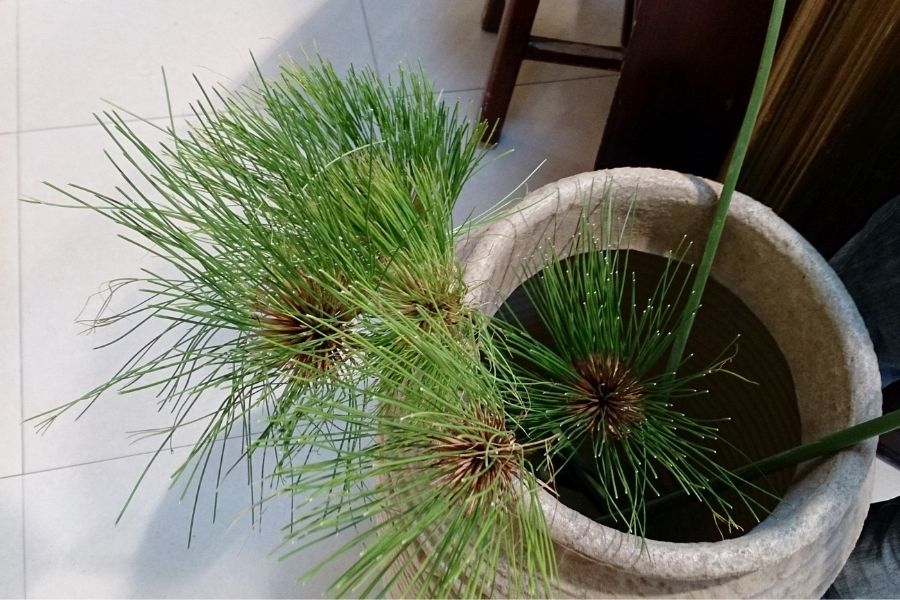
It is an aquatic flowering plant and only prospers when its roots are wet, meaning that the container actually needs to sit in a water-filled dish all the time – just change the water every week or so to make sure it isn’t too stagnant. Unsurprisingly, the papyrus is also a heat-loving plant, so don’t let your room’s temperature drop below 60 degrees Fahrenheit.
5. Garden Croton
Sometimes called “a bush on fire” due to its bright, variegated foliage, the garden croton will look like you’ve trapped autumn in a single pot as soon as you bring it indoors. But when you do, you’ll need to provide it with at least six hours of direct sunlight; if you don’t, you may see the bright reds and the fiery oranges of your croton begin to fade. If the plant’s leaves are mostly green, you need to provide it with more sunshine.
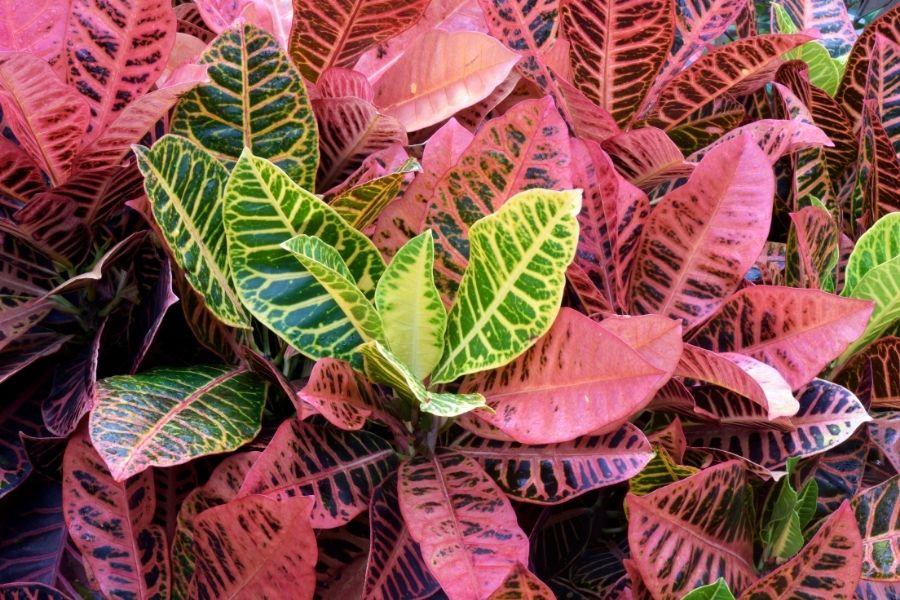
Another requirement to keep the colors vibrant is to mist the croton often as the plant thrives with high humidity. Water it frequently, when the soil is slightly dry to the touch, but don’t overwater it either. Just like many other plants in this list, try to keep the temperature above 60 degrees Fahrenheit to keep the conditions perfect for your croton.
6. Ponytail Palm
A native to Mexico, the ponytail palm isn’t really a palm but still grows like one, and it flourishes in direct sunlight. If you can only afford to give it indirect light, it will do fine but won’t grow as tall and as quickly as in full sun. With its bulb-like base and frizzy foliage, the ponytail palm is certainly an attention-grabber – a striking addition to any interior.
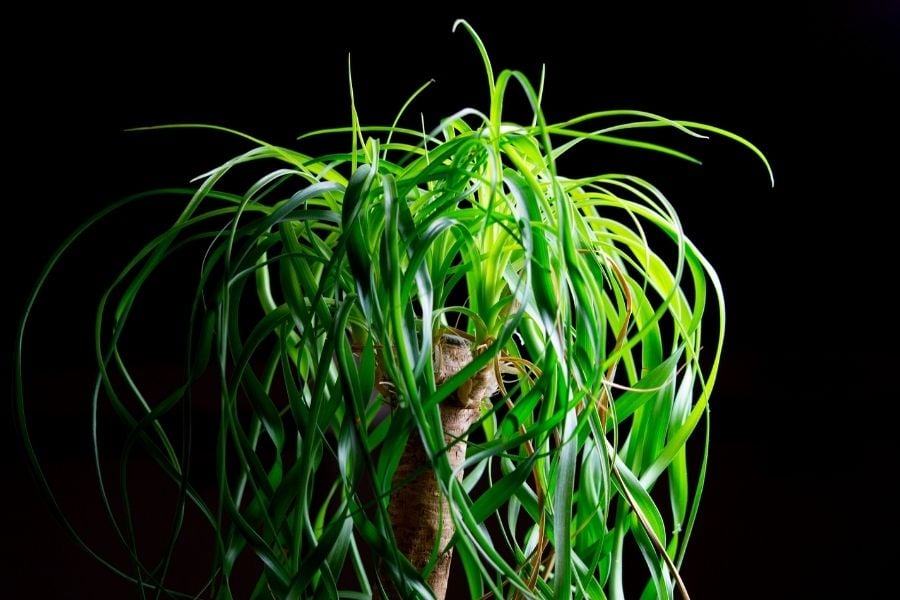
It’s also a great choice for busy people as it is rather impossible to kill inadvertently, partly because it stores water in its swollen trunk (just like succulents do). Just don’t overwater it, and allow the top two inches of soil to dry out between waterings; when you do water it, give your ponytail palm a good soak so that it can stock up for later.
7. Areca Palm
A delightful decorative piece for rooms with high ceilings, the areca palm can grow its impressive, lush foliage up to 8 feet tall – as well as a few feet wide. Put it next to a window pointing to the south or the west so that it receives generous sunshine and the lon fronds of this majestic plant will fill the interior with some serious tropical vibes.
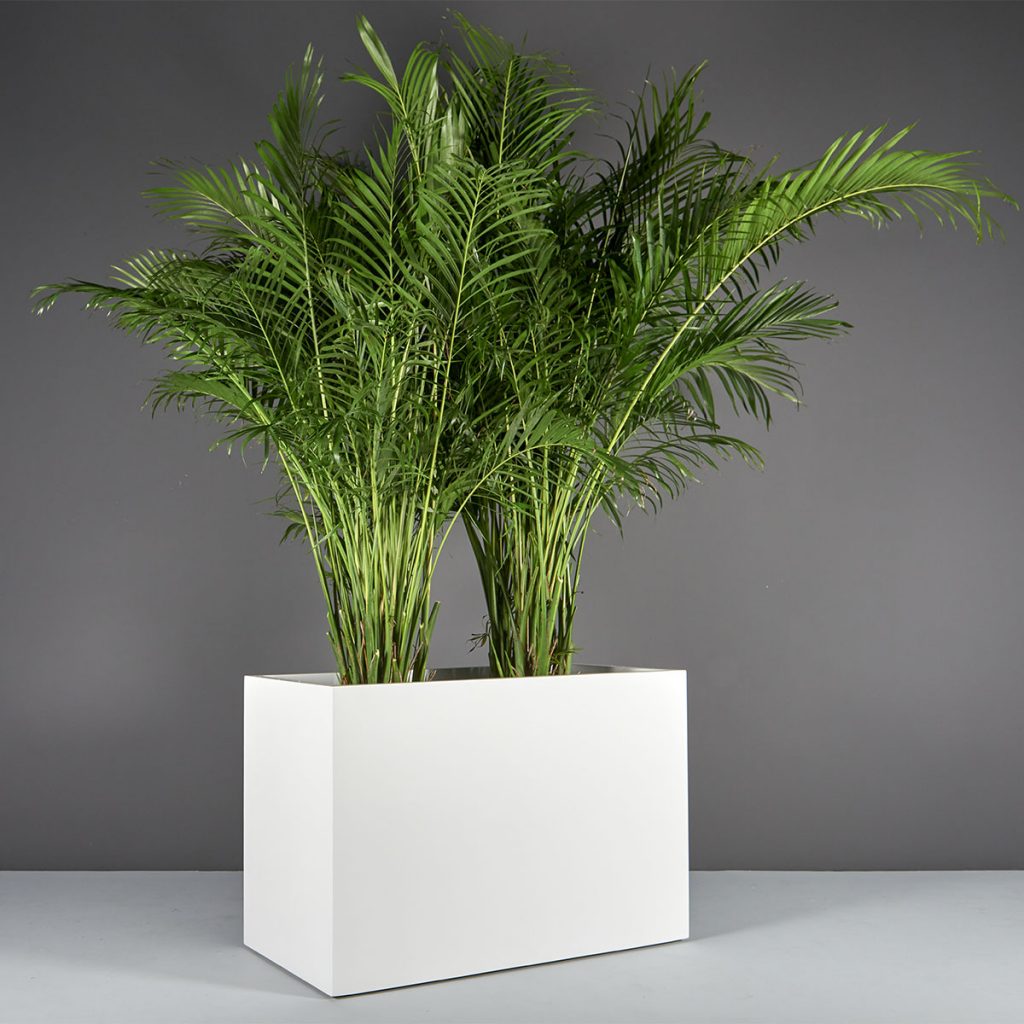
It is alternatively known as “the golden cane”, so for once you won’t have to worry when your plant starts to yellow under the sun rays. Other than bright sunlight, the areca palm also needs consistent moisture and high humidity, so water it whenever you notice the soil has gone dry (especially during the warmer months).
8. Hibiscus
The tropical hibiscus will bring large, beautiful flowers to your interior, with the hues ranging from red and pink to orange and yellow. The one requirement to get the hibiscus to bloom indoors is intense light, so put the pot somewhere sunny like a southward windowsill. Try not to overdo it though as excessive exposure to light may cause the colors to fade; a daily dose of a couple of hours of direct sunlight will make your hibiscus happiest.
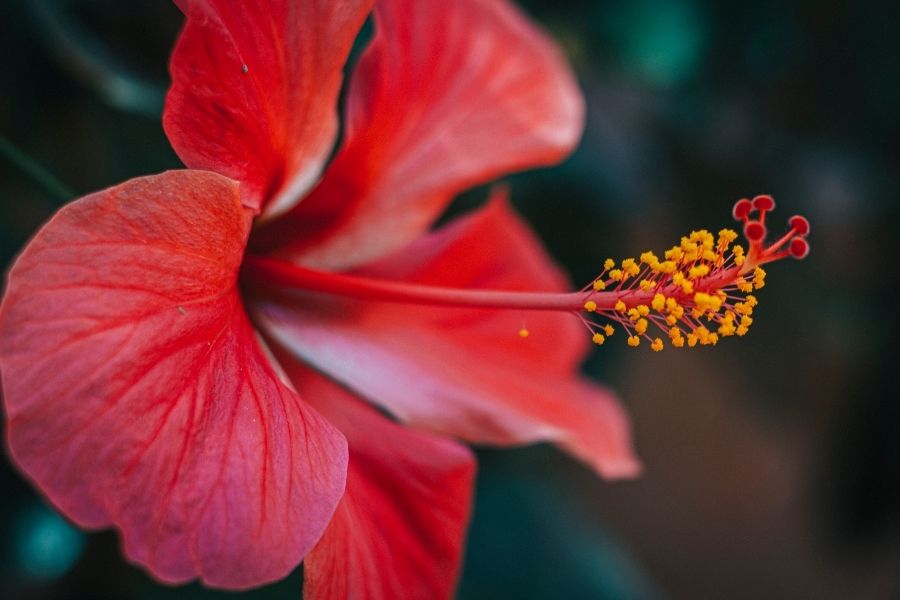
Put the plant in a container with good drainage, and water it on a regular basis to keep the soil moist – but not soggy. Increase your watering frequency as the temperature rises in hotter seasons and feed your hibiscus plant with an organic fertilizer to give it an additional boost of potassium.
9. Common Geranium
Another fantastic way to bring in some missing color, the common geranium offers to paint your interior with a number of cheerful hues like bright red or baby pink (depending on the particular species you get). It thrives in direct sunlight, so make sure you provide it with plenty of sunshine – four to six hours daily – and the geranium will return the favor with rich, vibrant blossom.
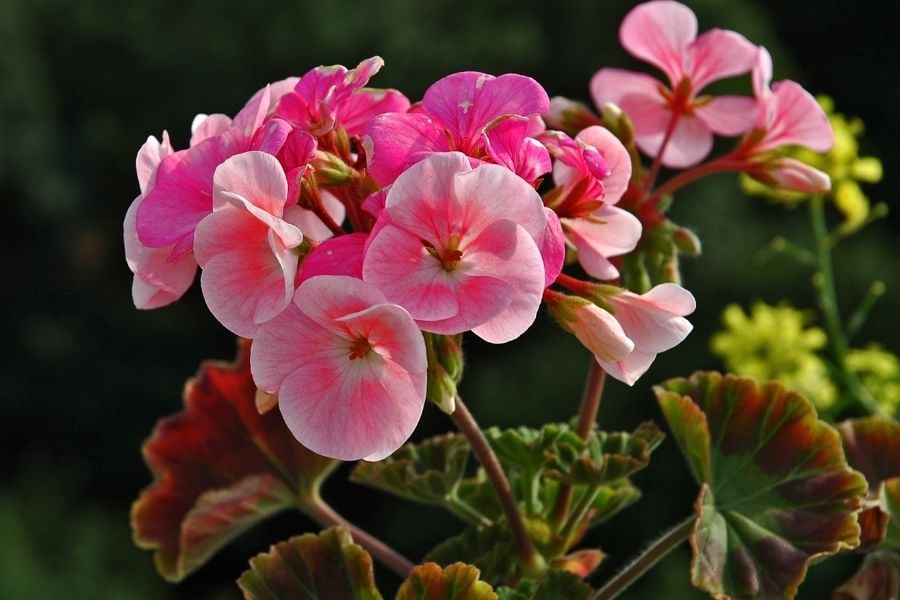
Plant your geranium in a planter with good drainage, ideally in a loose soil mix with high porosity. Sink your finger into the soil to check if the top inch feels dry. Water the geranium often, especially when it gets really hot outside.
10. Sweet Basil
Capping the list with a fresh, anise-like scent, the sweet basil comes with the wonderful bonus of being edible. Grow it in direct sunlight for a minimum of six hours a day and you will be able to harvest the plant’s delicious leaves. A window pointing southwest will bring best results – as well as sufficient light; a bit of afternoon shade is nothing to worry about.
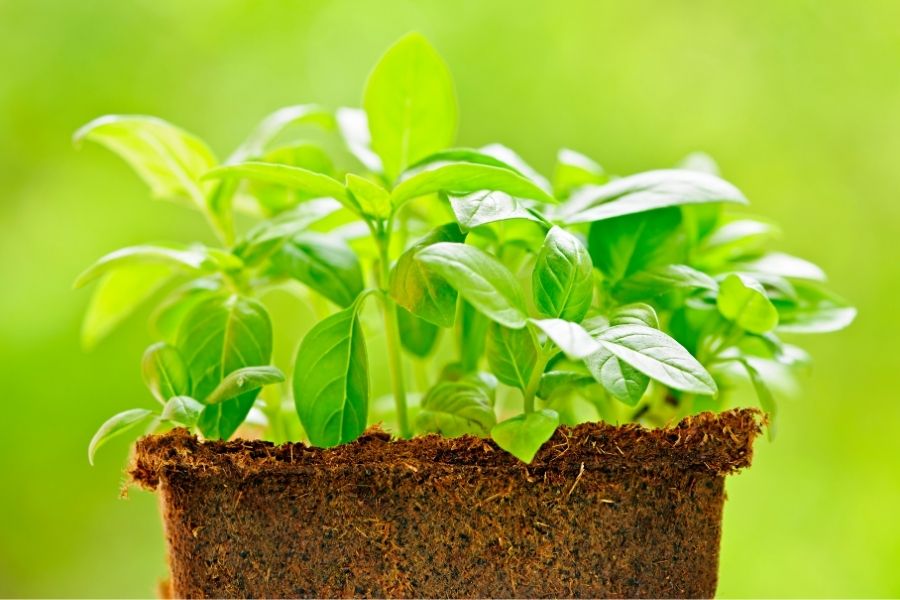
Plant your sweet basil in drainable soil, and water it more or less once a week. As much as possible, keep the plant moist at the bottom, but don’t overwater it either. Oh, and enjoy your homemade pizza with fresh, home-grown herbs!
